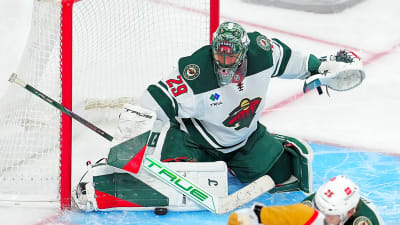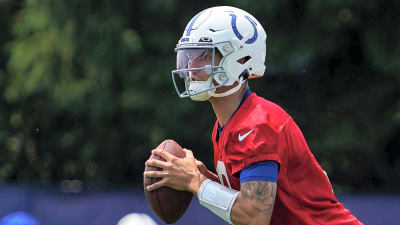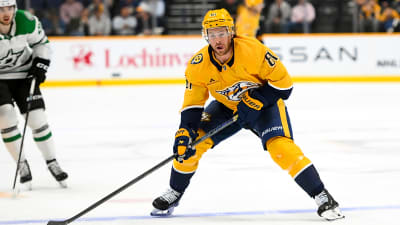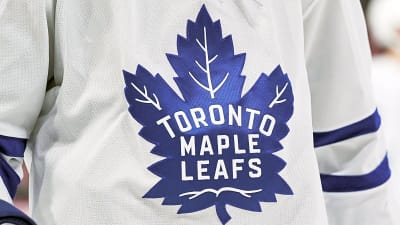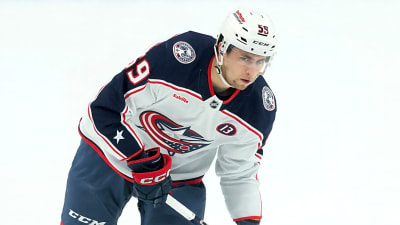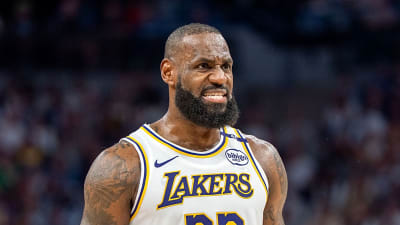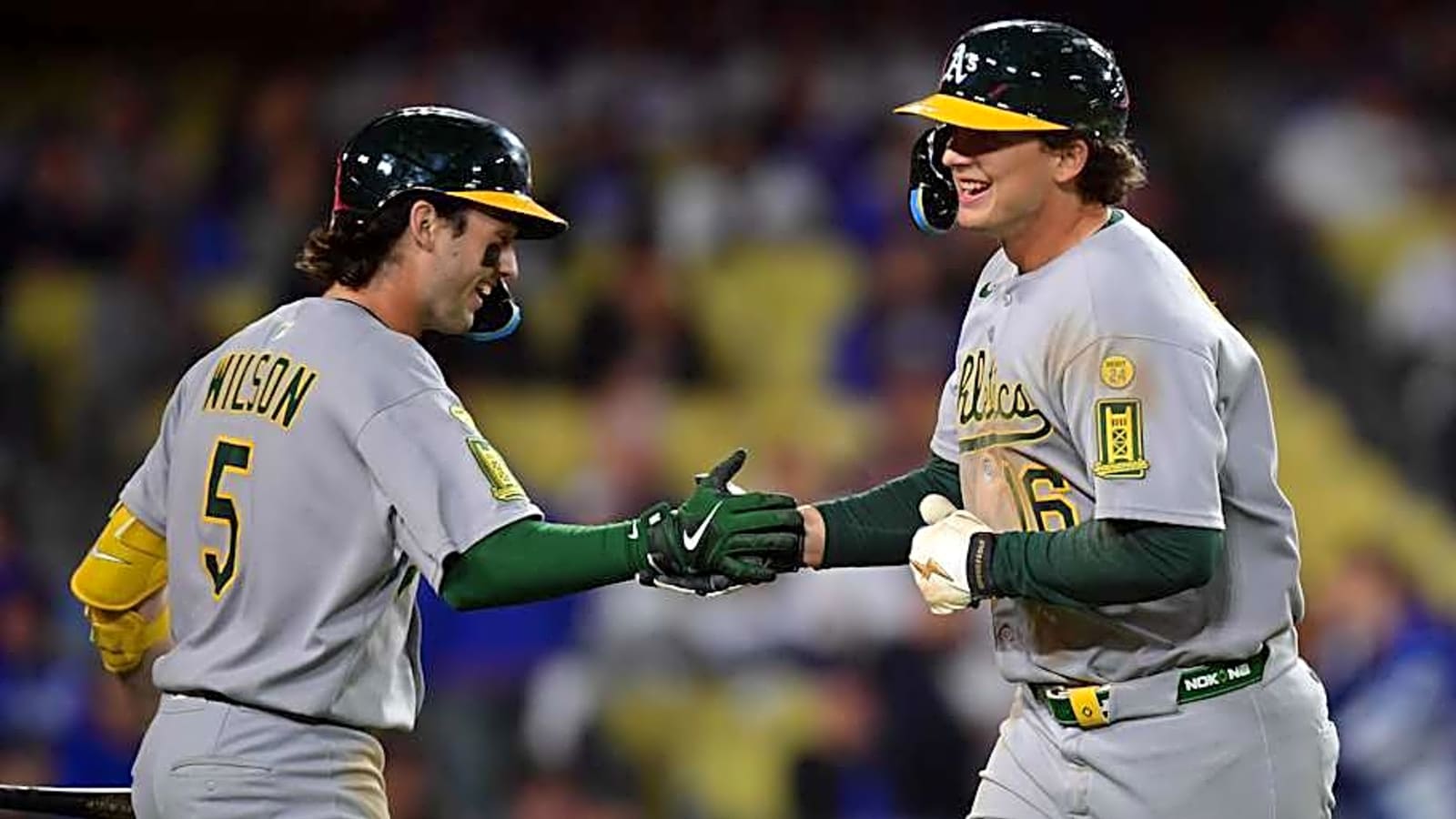
The A's have struck gold with two former first-round picks in rookies Jacob Wilson and Nick Kurtz. Both are exceeding expectations and will be battling each other for American League Rookie of the Year.
Both rookies are at the core of the young foundation the A's are building. Brent Rooker and Lawrence Butler were extended last offseason, and it wouldn't be the worst idea for the A's to look to lock down their pair of rookies for the foreseeable future.
The A's spent money this past offseason, whether it was to show fans that they are trying to compete or to avoid a grievance from the MLBPA. They likely spent because of the latter, but there is no denying that the front office is trying to compete, especially with the young core they are building.
The A's biggest trade chip this deadline may be Luis Severino, who they signed to a franchise record-setting contract during the offseason.
The catch is that it will become increasingly difficult to lure free agents to play for the A's in West Sacramento due to all the negative comments about the park. So, the A's will have to look for other ways to increase payroll, and extending their budding stars may be the best way to do it.
Wilson earned his first All-Star nod and started for the American League at shortstop on Tuesday night. Kurtz is fourth in home runs for first basemen with 17, behind Pete Alonso (21), Spencer Torkelson (21), and Michael Busch (19). CBS Sports writer Mike Axisa wrote that he believes Kurtz will lead all first basemen in home runs by the end of the season.
Given the pace he's on, it's not hard to imagine Kurtz making up ground on the bats ahead of him.
Fans don't expect the A's to ever extend players. When Rooker and Butler were extended, the narrative was that they A's only did that because they were trying to avoid a penalty. Every time a young A's player has a highlight, social media posts, fans on social media will comment "Future [Insert Team]," because that has been the trend of the front office.
Draft amazingly well, call up players, sell some tickets and build hype, then trade them all away right before they are eligible for arbitration.
Therefore, it would behoove the A's to sign Wilson and Kurtz to long-term extensions. They could have their young trio of Butler, Wilson, and Kurtz locked down for the next six to eight years, which would signal to A's fans that maybe there is something different this time around.
In the event the A's do sign Wilson and Kurtz to extensions, what could they look like? Well, here is a very rough estimate of what the year-by-year breakdown could look like.
Jacob Wilson | Potential Extension: 7 years, $80 million
Year-By-Year Breakdown:
(Pre-Arb) 2026: $2.25m
(Pre-Arb) 2027: $2.25m
(Arb 1) 2028: $8.5m
(Arb 2) 2029: $10.5m
(Arb 3) 2030: $12.5m
(FA) 2031: $22m
(FA) 2032: $22m
- (FA) 2033: $23m [Club Option]
Wilson is currently arbitration-eligible in 2028 and a free agent in 2031. This potential extension for Wilson could be similarly structured to Jackson Merrill, who received a 9-year, $135 million extension in April.
Wilson would see steady increases in the arbitration phase, before seeing a jump in the would-be free agent years. Most rookie extensions include an option of some sort, usually a club option.
This would keep the All-Star around until his age 31 season, if the club option is accepted. Butler's extension keeps him in the green and gold until his age 31 season if his club option is picked up, as well. This would be the type of deal the A's would likely be looking at offering.
While the contract for those years seems fair, it's difficult to say whether Wilson would be willing to hit free agency two or three years later, which could end up costing him money on the back-end. Wilson signed for $5.5 million out of the draft, so he may be willing to ride that initial payment out while hoping for a bigger cash-in later on.
Nick Kurtz | Potential Extension: 8 years, $86 million
Year-By-Year Breakdown:
(Pre-Arb) 2026: $2m
(Pre-Arb) 2027: $2m
(Arb 1) 2028: $5m
(Arb 2) 2029: $9m
(Arb 3) 2030: $13m
(Arb 4) 2031: $15m
(FA) 2032: $20m
(FA) 2033: $20m
- (FA) 2034: $22m [Club Option]
This extension would take Kurtz through his age-31 season as well, if the club option is picked up, just like Wilson and Butler. Keeping the A's on the timeline they want to be on. Kurtz is arbitration-eligible in 2028, same as Wilson, but has an extra year of arbitration eligibility. He will be a free agent in 2032.
The 6-foot-5, 240-pound slugger would remain in green and gold for the foreseeable future and would be a big part of helping to bring the A's back to contention.
Both extensions would be the largest and second-largest contracts the A's have ever handed out, but would both be very worth it. It is rare to find rookies who perform this well, this early on in their careers. The sky is the limit for both of them. Not only would these extensions make Wilson and Kurtz happy, but they will boost morale within the team, and it will ripple down to the minor leagues.
They would also set more of a precedent that the A's are willing to spend on players that they feel are worth building around, which could also add some extra motivation.
If the A's are serious about contending and contending for more than just two to three years, then they will extend Wilson and Kurtz sooner rather than later. Hopefully, this season as well, to give a clearer picture of how they will operate in the offseason.
If, or hopefully when, the A's extend them, the stigma around the team being a pit-stop for young, good players early in their careers would be no more. Instead, the A's could become a long-term home where performance is rewarded.
More must-reads:
- Tigers first team to 60 wins thanks to another Tarik Skubal gem
- Diamondbacks GM makes his trade deadline hopes clear
- The 'MLB All-Star Game MVPs' quiz
Breaking News
Trending News
Customize Your Newsletter
 +
+
Get the latest news and rumors, customized to your favorite sports and teams. Emailed daily. Always free!
